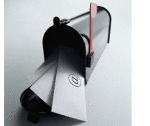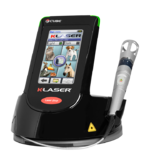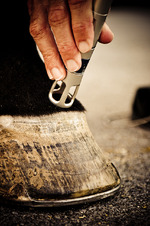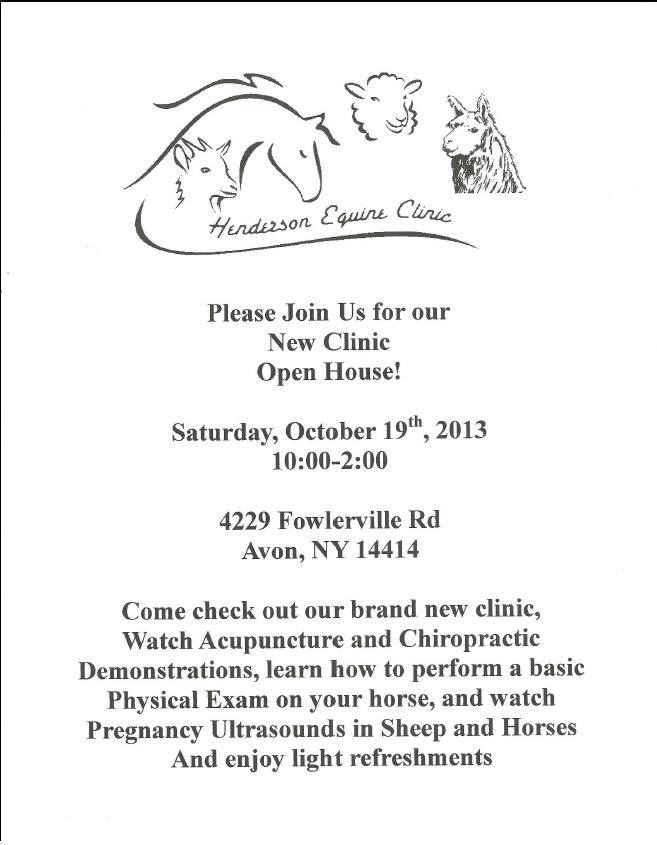The last 12 months have brought many changes for the Henderson Equine Clinic, which has experienced a trifecta of exciting advances in its ability to provide quality services for both equines and small ruminants.
A year ago this month, Dr. Anne Dewar joined Dr. Bonny Henderson, who established her veterinary practice in the Valley after achieving her doctor of veterinary medicine degree at Cornell in 1994. Originally from the Saratoga area, Henderson first came to the Valley as an undergraduate at SUNY Geneseo, where she expanded her equestrian experience to include the joys of foxhunting under the tutelage of Judge J. Robert Houston and Dan Wade.
Dewar discovered the area in part through her affinity for small ruminants, coming to know Matt Kyle who owns the sheep seen grazing in various locations in the northern part of Livingston County. Dewar spent her first two years in practice at Finger Lakes Equine with Dr. Bob Tugel at Finger Lakes Racetrack after gaining her DVM degree at Virginia-Maryland Regional College of Veterinary Medicine, a collaboration between Virginia Tech and the University of Maryland spread over three campuses that specialize in sports medicine, research, and surgical practices. Coming from an equestrian background in pleasure and endurance riding, Dewar has now become an avid foxhunter as well.
In the equine field, her specialties are lameness and reproduction, though she also feels a special fondness and calling in working with smaller multi-stomached livestock such as sheep, alpacas, goats, etc.
Henderson remarks that “Anne has a solid background and amazing retention of what she has seen, read and learned over the years. She is also very practical in her advice and recommendations for treatment. We hit it off very quickly and make a great team, along with office manager Tracy Scalise.”
The next big development in 2013 was last fall’s move of the clinic from its original location on Groveland Road near the Interstate 390 overpass to a 20-acre piece of an old dairy farm on Fowlerville Road in Avon. Renovations on the old barn are still in progress and will eventually include a small indoor ring for assessing soundness and other practical uses. For now, there is a spacious exam area, well-equipped laboratory, three treatment stalls, stocks and ample parking for all sizes of livestock transports.
In the technology realm, the clinic is now offering K-Laser Class IV therapeutic laser treatments for advanced pain relief and enhanced tissue healing.
“We are very excited to offer these treatments to our patients,” Dr. Bonny said. “Lasers have been used in Europe for dozens of years, but are relatively new here in the U.S. The K-Laser is an effective treatment for many conditions.”
Although the K-Laser is being used by numerous veterinary health care providers throughout the U.S and the world, the Henderson Clinic is unique in this area with offering this service.
Henderson went on the say, “We can help patients in more ways that we could before, in a safe, effective, drug-free manner. The K-Laser is a wonderful addition to our clinic. It’s very exciting to help our patients get the results they want, and with minimal side effects. We have been treating equine and canine arthritis, wounds, lick granulomas, chronic intervertebral disc disease in chiropractic patients, tendonitis, sprains/strains, sore back, otitis, post-surgical incisions, and trauma.”
Laser therapy works by stimulating production of cellular energy in damaged cells and by enhancing the cell membrane permeability. This promotes the speed and quality of healing, enhances the exchange of nutrients and wastes across the cell membrane and improves the elasticity of injured tissues.
Laser therapy also modulates pain and reduces inflammation. It can be used immediately on acute injuries, over broken skin, and over metal implants. Laser therapy enhances the rate and quality of injuries and can help with the resolution of chronic complaints such asarthritis.
Perhaps best of all, the actual instrument itself is battery-powered, relatively small, and light enough to be easily handled and focused. For more information on the K-Laser, visit the company website at www.k-laserusa.com.
As my visit to the clinic was concluding, I happened to glance at what appeared to be a heavy catalog on the office counter. Almost as an afterthought, Henderson inquired, “Oh yes, did I happen to tell you about my book?”
Picking up the weighty tome, I was immediately impressed by the scope of the 20 chapters, as well as the numerous, top-quality, color photos and illustrations.
“Equine Health and Emergency Management” provides essential knowledge in all aspects of horse care. The book begins by emphasizing the importance of horsemanship in the prevention of injury and disease. Key factors of facility safety and stable management are identified as essential in equine ownership, as is a thorough understanding and knowledge of the healthy horse, broodmare, and foal.
Once this essential knowledge base is achieved, the book progresses to discussion of preparing for and managing emergencies. Assessment and treatment skills are addressed. Diseases and trauma of each body system are also covered outlining the clinical signs, vital signs, history or possible causes, actions to take, and prevention strategies for each.
The book concludes by addressing the assessment, planning, and preparation needs when faced with man-made or natural disaster.
Published by Centage Learning in 2012, the book was obviously a prolonged labor of love. It is available on Amazon, and would no doubt be a worthy addition to any horse owner’s library — or better yet — tack room.
Thanks to the Livingston County News and to Sally Fox for this very nice article.
 Tuesday, March 4, 2014
Tuesday, March 4, 2014 




